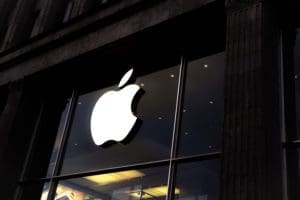 As ubiquitous as the iPhone is today (and as many competitors as it has inspired), it can be difficult to think back to June 2007, when the first iPhone went on sale. Disrupting the Blackberry world, the iPhone of 2007 was a far cry from the iPhone of 2020.
As ubiquitous as the iPhone is today (and as many competitors as it has inspired), it can be difficult to think back to June 2007, when the first iPhone went on sale. Disrupting the Blackberry world, the iPhone of 2007 was a far cry from the iPhone of 2020.
Lines formed outside Apple Stores far in advance of the June 29 release date, when a 4GB model sold for $499 and the 8GB for $599. Initial press reviews of what had been codenamed the “Purple Experience Project” were positive but tentative.
“Our verdict is that, despite some flaws and feature omissions, the iPhone is, on balance, a beautiful and breakthrough handheld computer,” The Wall Street Journal wrote. One downside: The iPhone was initially exclusive to AT&T — and it didn’t even use 3G, instead relying on the slower EDGE network.
The original iPhone’s popularity grows
Blackberry and Palm users cringed at the iPhone’s lack of a keyboard or a stylus, but users quickly caught on to the touch screen, finding “pinch to zoom” intuitive. The multitasking was addictive, allowing users to move from music to phone call to email with ease. Internal sensors enabled automatic portrait-to-landscape orientation and brightness adjustment. By November 2007, Apple had sold nearly 1.4 million iPhones.
Yet many of the features that make today’s iPhone so indispensable were still versions away. The App Store, for instance, didn’t make its debut until the 3G. Location services and GPS were nonexistent. And the only way to sync the phone was by connecting it to iTunes on a computer with the same 30-pin connector as the iPod.
Did you enjoy this installation of SmarterMSP’s Tech Time Warp? Check out others here.
Photo: Laurenz Heymann / Unsplash
